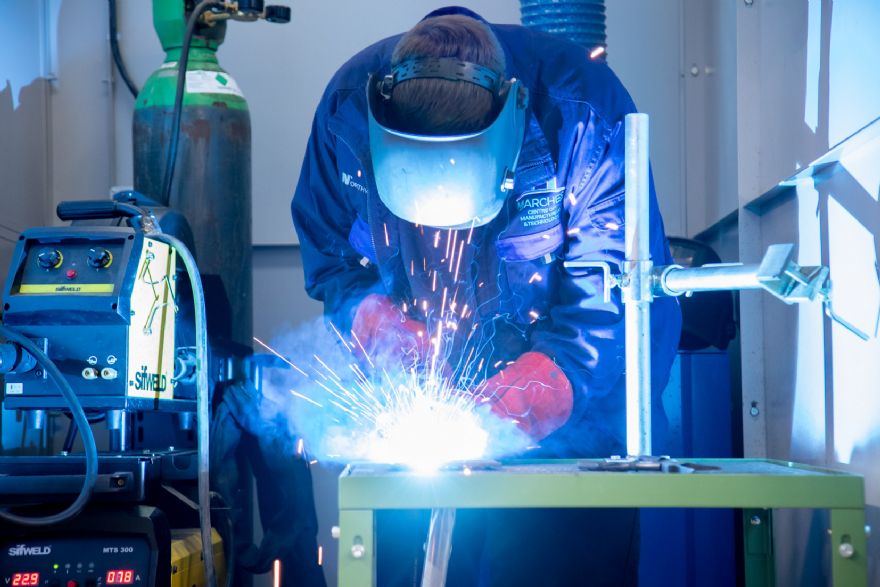
April saw a further acceleration in the rate of expansion of the UK manufacturing sector as the growth of output and new orders were among the highest seen over the past seven years, which in turn led to a solid increase in employment. However, the sector still remained beset by supply chain delays and input shortages, which contributed to increased purchasing costs and record selling-price inflation.
The seasonally adjusted
IHS Markit/CIPS Purchasing Managers’ Index (PMI) rose to 60.9 in April, up from 58.9 in March and above the earlier flash estimate of 60.7. The latest reading is the highest since July 1994’s record high (61.0).
Manufacturing production increased for the eleventh successive month in April and this output growth was mainly attributed to a loosening of lockdown restrictions, improved demand and rising backlogs of work.
Underpinning the latest robust expansion of production was a similarly marked improvement in intakes of new business. Total new orders rose for the third straight month, again largely due to a further revival of domestic market conditions.
Stronger client confidence, the reopening of parts of the economy and improving global market conditions all contributed to sales growth, although new export business also rose in April, the growth rate was weak in comparison to that registered for total new orders. Companies reported improved new work intakes from several trading partners, including mainland Europe, the USA, China and South-East Asia.
Large-sized manufacturers saw a UK Manufacturing PMI at 60.9 in April (321-month high) with substantial expansion in new export order intakes, compared to only a marginal rise at smaller firms. The outlook for the UK manufacturing sector also remained positive at the start of the second quarter — two-thirds (66%) of companies forecast that output will be higher in a year’s time.
The overall degree of confidence currently stands at its highest level in seven years. Optimism reflected expectations for less disruption related to Covid-19 and Brexit, economic recovery, improved client confidence and planned new product launches.
Average selling prices rose at the fastest pace since charges data were first collected in November 1999, as manufacturers passed on substantial cost increases to their clients. Demand outpacing supply was also mentioned as a factor contributing to both selling price and input cost increases. Supply chain delays and input shortages led to another near-record lengthening of vendor lead times.
Manufacturers attempted to guard against further delivery delays and rising input costs by stepping up purchasing to one of the greatest extents in the survey history. Manufacturing employment rose for the fourth successive month, with the rate of job creation staying close to March's seven-year high. Where an increase in staff headcounts was registered, this was linked to improved intakes of new work, higher production needs and efforts to combat rising backlogs of work.
Commenting on the latest survey results, Rob Dobson, IHS Markit director, said: “Further loosening of Covid-19 restrictions at home and abroad led to another marked growth spurt at UK factories. The headline PMI rose to a near 27-year high, as output and new orders expanded at increased rates. The outlook for the sector is also increasingly positive, with two-thirds of manufacturers expecting output to be higher in one year’s time. Export growth remains relatively subdued, however, as small manufacturers struggle to export.
“The sector also remains beset by supply chain issues and rising inflationary pressures. Disruption following Brexit and Covid-19, especially at ports, caused a further near-record lengthening of supplier delivery times. The resulting input shortages kept producer price inflation among the highest over the past four years.
“Manufacturers have generally passed on these costs to customers, as highlighted by a record survey rise in selling prices, but it is hoped that this inflationary backdrop will subside once supply and demand come back into line as covid-related logistic delays ease.”
Lee Collinson, head of manufacturing at Barclays, said: “The easing of lockdown restrictions and the effects of the vaccine rollout programme have clearly put a spring in the step of manufacturers with growing momentum in new business, particularly from the home market. Rising output for the eleventh month running and manufacturer confidence at a seven year high bode well for the year ahead but supply chain issues continue to hamper the rate of progress and with demand outstripping supply, inflationary pressures look menacingly like the fly in the ointment to come.”
Duncan Brock, Chartered Institute of Procurement and Supply group director, said: “The manufacturing sector was flooded with optimism in April as the PMI rose to its highest level since July 1994, bolstered by strong levels of new orders and the end of lockdown restrictions opened the gates to business.
It was primarily the home market that fuelled this upsurge in activity though more work from the USA, Europe and China demonstrated there were also improvements in the global economy. This boom largely benefitted corporates as output growth at small-scale producers continued to lag behind.
“As businesses raced to meet the need for increased capacity, the lost jobs of 2020 returned in greater numbers and employment creation continued in earnest at similar levels to last month and at a pace rarely surpassed in the survey history.
“However, the still significant delays in the delivery of goods due to the pandemic, Brexit and the Suez blockage in some sectors hampered further progress on two counts. The slow delivery of goods motivated supply chain managers to increase their order numbers and try to build up recently unravelled stocks leading to further hold-ups, and the injection of more inflationary pressures into the economy.
“Price rises were among the highest in the last three decades and shortages in some essential materials intensified. This in turn lead to customers paying more and at a rate not seen since records began in late-1999. This is likely to filter down to consumers before too long.”